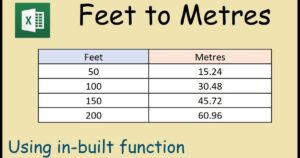When we think about how many hours in a year, it’s easy to forget that not every year is the same. A regular year follows a fixed pattern, while a leap year adds an extra day, giving us more hours to count. Knowing this difference helps when planning schedules, goals, or even big yearly events.
In 2025, understanding the gap between a leap year and a regular year is important. A leap year gives us more time, but both follow simple calculations. This guide breaks it down in a clear way, so you’ll always know exactly how many hours are in a year.
Background
Understanding hours in a year is more than just a mathematical exercise; it’s a fundamental concept that impacts how we plan our lives, manage our time, and structure our work schedules. Whether you’re calculating annual salaries, planning projects, or simply curious about time management, knowing the exact number of hours in a year provides a valuable perspective on how we spend our most precious resource: time.
A standard year contains 8,760 hours, while a leap year has 8,784 hours. These numbers represent every single hour we have available in a calendar year, from the first moment of January 1st to the last second of December 31st.
Must read: Hours In a Week – How Many Hours Are In a Week (2025)
Why It’s Important to Know How Many Hours in a Year?

Knowing the hours in a year serves several practical purposes in our daily lives:
Career and Financial Planning: Many salaried employees need to understand annual hours to calculate their true hourly wage. When you know there are 8,760 hours in a regular year, you can divide your annual salary by this number to see what you’re earning per hour, helping you make informed career decisions.
Time Management: Breaking down a year into hours makes large goals feel more achievable. If you want to learn a new skill or start a business, understanding that you have over 8,000 hours available helps you create realistic timelines and schedules.
Project Planning: Businesses and project managers rely on accurate annual hour calculations for resource allocation, budgeting, and deadline setting. Knowing the exact hours in a year ensures projects are scheduled realistically.
Work-Life Balance: When you realize there are 8,760 hours in a year and subtract time for sleep (about 2,920 hours if you sleep 8 hours daily), you’re left with roughly 5,840 waking hours. This perspective helps prioritize what truly matters.
How to Calculate Hours in a Year
Calculating hours in a year is straightforward once you understand the basic formula. Here’s how to do it step by step:
Basic Formula: Days in a year × 24 hours per day = Total hours in a year
For a regular year: 365 days × 24 hours = 8,760 hours
For a leap year: 366 days × 24 hours = 8,784 hours
You can also break this down further if you need to calculate specific periods:
- Hours in a month (average): 8,760 ÷ 12 = 730 hours
- Hours in a week: 7 days × 24 hours = 168 hours
- Working hours in a year: If you work 40 hours per week for 52 weeks = 2,080 hours
This calculation method works for any year type, whether it’s a regular year, leap year, or even century year. Simply multiply the number of days by 24 to get your answer.
Different Years and the Hours They Contain
Not all years are created equal when it comes to hours in a year. Our calendar system includes variations that affect the total hours available:
The Gregorian calendar, which most of the world uses today, includes these year types to keep our calendar aligned with Earth’s orbit around the sun. This astronomical precision means we need different types of years to maintain accuracy over centuries.
Regular years make up the majority of our calendar, occurring three out of every four years. Leap years happen approximately every four years to account for the extra quarter-day in Earth’s orbit.
Century years follow special rules to fine-tune our calendar system even further.
Understanding these differences helps you calculate time accurately for long-term planning, historical research, or scientific calculations that span multiple years.
Regular Year (365 Days): The Standard Measurement

A regular year is what most of us experience most of the time. With 365 days and 8,760 hours, it’s the baseline for calculating annual time.
These 8,760 hours in a regular year break down into some interesting statistics. If you sleep for 8 hours every night, you’ll spend 2,920 hours sleeping, leaving 5,840 hours awake. If you work a standard full-time job of 40 hours per week with two weeks of vacation, you’ll work approximately 2,000 hours, which is less than 23% of all hours in a year.
Regular years occur in any year that isn’t divisible by 4, such as 2021, 2022, 2023, 2025, and so on. They form the standard by which we measure our lives, plan our goals, and structure our societies.
The consistency of 8,760 hours in a regular year makes it easy for businesses to forecast, for individuals to plan, and for society to function with predictable rhythms.
Leap Year (366 Days): Adding a Day
A leap year contains 366 days and 8,784 hours; that’s 24 extra hours compared to a regular year. This additional day, February 29th, exists because Earth takes approximately 365.25 days to orbit the sun, not exactly 365 days.
Those extra 24 hours in a leap year might seem insignificant, but they’re crucial for keeping our calendar synchronized with the seasons. Without leap years, our calendar would gradually drift out of alignment with Earth’s position around the sun, and eventually, summer would occur in December in the Northern Hemisphere.
Leap years occur every four years in most cases. Years divisible by 4 are leap years: 2020, 2024, 2028, and so on. This means you get 8,784 hours instead of 8,760 hours one year out of every four.
For people born on February 29th, this extra day has special significance. For the rest of us, it’s a reminder that time measurement requires precision and that those 24 additional hours in a year help keep humanity on schedule with the cosmos.
Century Years: A Special Rule

Century years follow unique rules that affect the hours in a year calculation. While most years divisible by 4 are leap years, century years (years ending in 00) must be divisible by 400 to qualify as leap years.
This means that the year 2000 was a leap year with 8,784 hours because 2000 is divisible by 400. However, 1900 was not a leap year; it had only 8,760 hours because while 1900 is divisible by 4, it’s not divisible by 400. The same will be true for 2100, 2200, and 2300, which will all be regular years with 8,760 hours.
The century year rule exists to fine-tune our calendar even further. The Earth’s orbit is actually 365.2422 days, not exactly 365.25 days. If we added a leap day every four years without exception, we’d overcorrect, and the calendar would drift in the opposite direction.
By occasionally skipping leap years in century years not divisible by 400, we maintain calendar accuracy across centuries. This level of precision ensures that the hours in a year remain synchronized with astronomical reality for generations to come.
Quick Reference Summary:
- Regular year: 8,760 hours
- Leap year: 8,784 hours
- Century year (not divisible by 400): 8,760 hours
- Century year (divisible by 400): 8,784 hours
Conclusion
Understanding how many hours in a year helps us manage time more effectively. A regular year has 365 days, which equals 8,760 hours, while a leap year has 366 days, totaling 8,784 hours. This small difference of 24 hours may seem minor, but it adds up over time and can affect yearly planning, deadlines, and even financial or personal goals.
In 2025, knowing whether it’s a regular year or a leap year is especially useful for scheduling and long-term planning. By keeping track of these hours, you can better organize your projects, events, and daily routines. Whether for work, study, or personal life, understanding the hours in a year gives you a clear perspective on time management and productivity.
FAQ’s
How many hours are in a year?
A regular year contains 8,760 hours (365 days × 24 hours), while a leap year has 8,784 hours (366 days × 24 hours).
How do you calculate hours in a year?
Simply multiply the number of days in a year by 24 hours per day: for a standard year, it’s 365 × 24 = 8,760 hours.
What’s the difference between hours in a regular year and a leap year?
A regular year has 8,760 hours, while a leap year contains 8,784 hours. That’s 24 extra hours due to the additional day in February.
How many working hours are there in a year?
If you work 40 hours per week for 52 weeks, that equals 2,080 working hours in a year, which is about 24% of all hours available.
How many hours do we sleep in a year?
If you sleep 8 hours per night, you’ll sleep approximately 2,920 hours in a year, leaving about 5,840 waking hours for other activities.
Why does the number of hours in a year matter?
Knowing the hours in a year helps with salary calculations, time management, project planning, and understanding how you’re actually spending your most valuable resource time.





